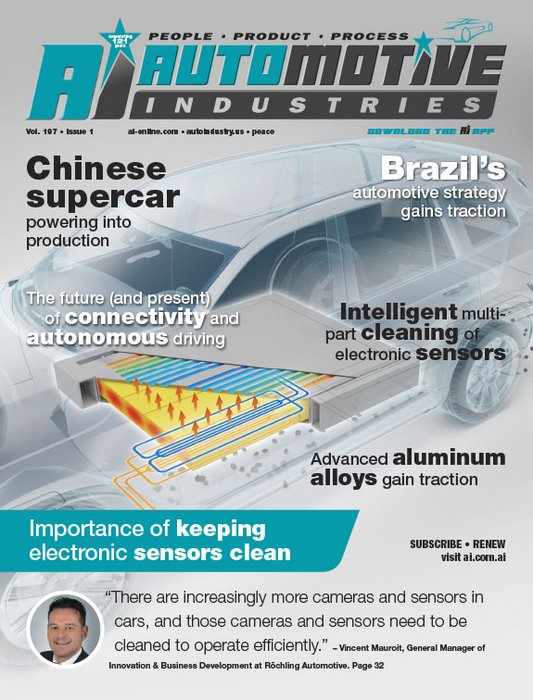
Car washing will never be the same again – dirt and grime can impact directly on the safety and performance of a vehicle due to the proliferation of sensors.
Sensors can only do their job if they can “see,” which means that it is vital that they be kept clean under all conditions.
To address this important challenge, Rochling Automotive has developed the Advanced Active Cleaning System (AACS). “There are increasingly more cameras and sensors in cars, and those cameras and sensors need to be cleaned to operate efficiently,” says Vincent Mauroit, general manager of Innovation & Business Development at Rochling Automotive.
When an autonomous vehicle detects its sensors or cameras are obscured, it will send a message to the AACS’s ECU and it will respond by spraying the dirty area. The system is designed to require low energy consumption to prevent unnecessary strain on the car’s power supply, Mauroit says.
Rochling has extensive experience in thermoplastic processing and the development of vehicular fluid tanks, such as those used for holding washer fluid. In the case of the AACS, Rochling designed a tank that uses an integrated control system and features a thermal management unit to optimize water temperature within the tank. There is the necessary hose system to transfer the cleaning fluid to the various locations around the car where the sensors are located.
Through an intelligent, integrated control system, AACS treats critical areas of the vehicle’s exterior with cleaning fluid. In addition to keeping sensors clear for highly automated and autonomous driving, this system is able to clean conventional car parts, such as the headlights and front and rear windshields.
When the AACS’s digital platform is alerted that a part needs cleaning, the system’s rapid response program provides controlled fluid dosage with precise pressure regulation of the pump using a Master Cleaning Management system. It was designed to require low energy consumption to prevent unnecessary strain on the car’s power supply, and also to save water.
Dosage to individual sensors is controlled, and an integrated thermal management system optimizes the cleaning process in order to reduce usage of water and cleaning chemicals. As a result, the fluid tank needs refilling less often. In addition, the system monitors the liquid level within the tank using an integrated sensor.
This allows it to intelligently prioritize the different areas that need cleaning based on their importance for safety and supply them accordingly. By doing this, the AACS enables the highest possible driving safety while also enhancing comfort – the driver only has a single tank to refill for all components.











More Stories
SikaBaffle® technology helps customers build lighter, stronger, safer, quieter and greener vehicles
Dürr and GROB concept battery factory uses 50% less production space
DuPont materials science advances next generation of EV batteries at The Battery Show